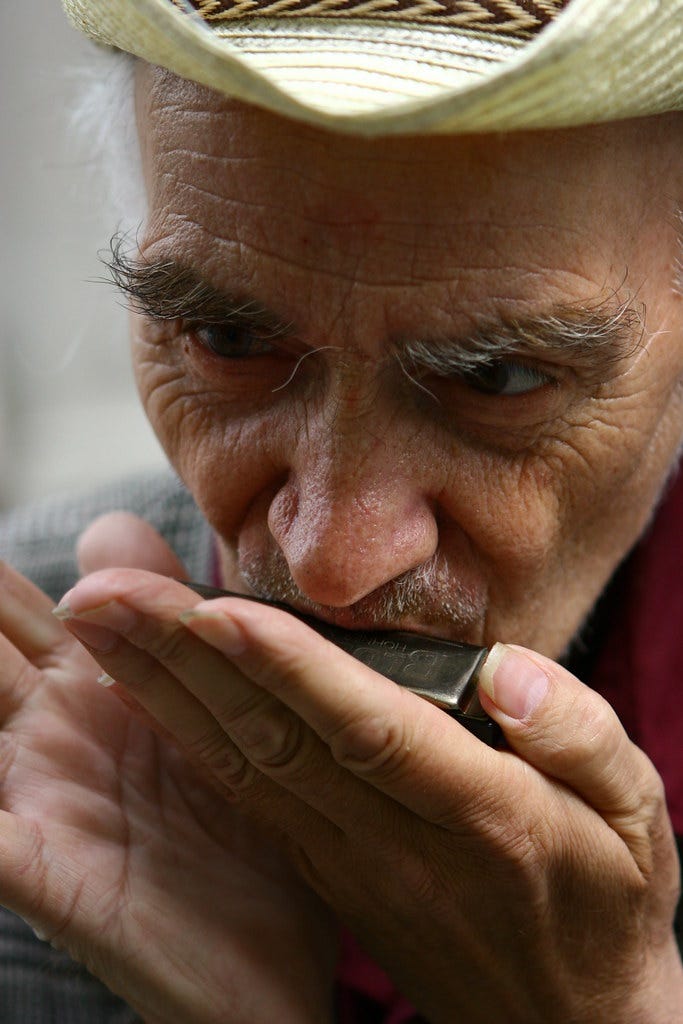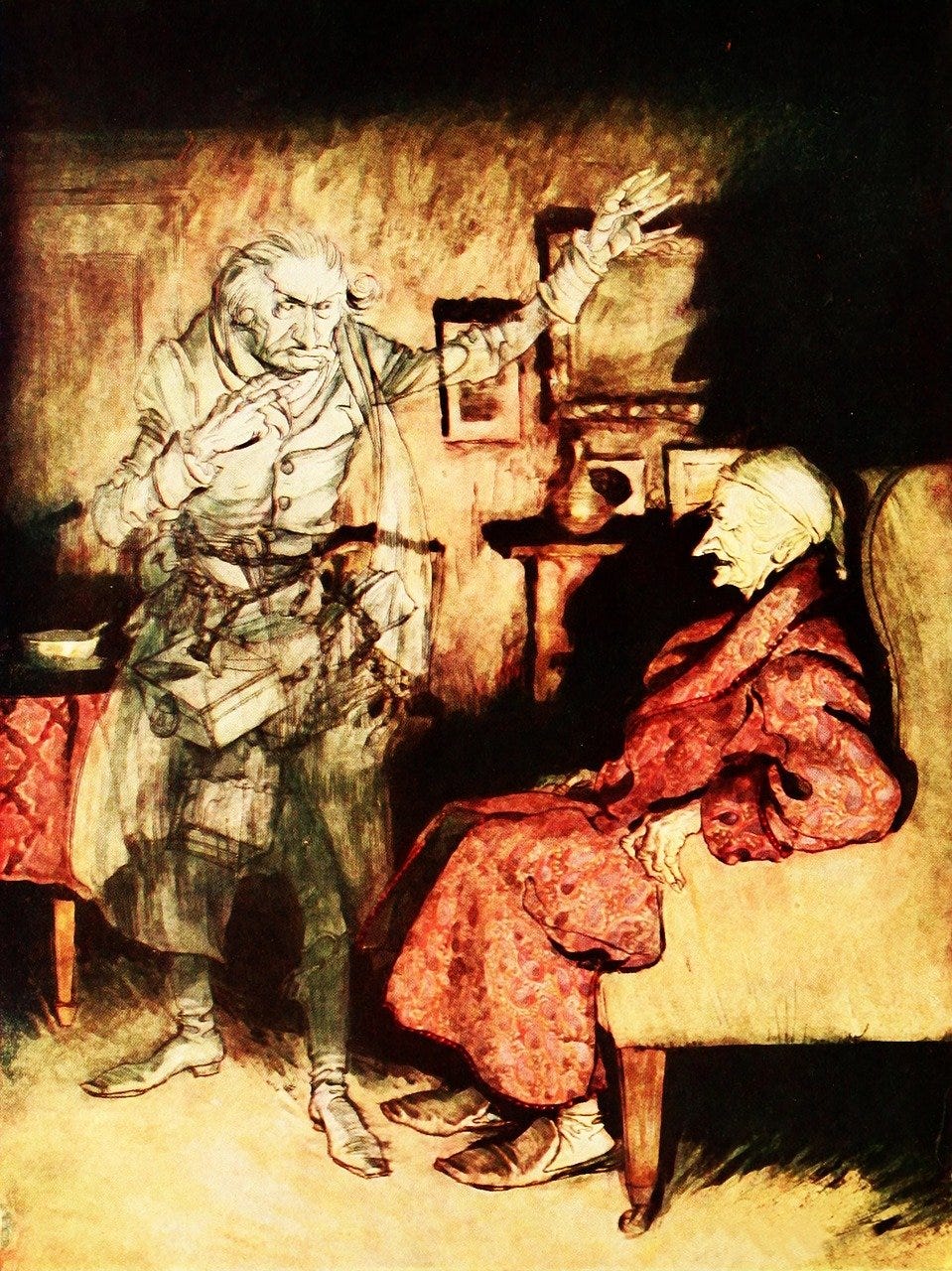Sarah White is the founder and director and Hilary Dumitrescu is the board V.P./Treasurer of Sheltering Silverton, a nonprofit dedicated to ending chronic unsheltered homelessness in the Silverton, Oregon region. Both of them think the other one is the “real brains of the operation.”
Stave I: Oregon’s Ghost of Poverty
“I have always thought of Christmastime, when it has come round...as a good time; a kind, forgiving, charitable, pleasant time; the only time I know of, in the long calendar of the year, when men and women seem by one consent to open their shut-up hearts freely, and to think of people below them as if they really were fellow-passengers to the grave, and not another race of creatures bound on other journeys.”
Charles Dickens wrote his classic short story “A Christmas Carol” in 1843. For nearly two centuries, this “ghost story of Christmas” as he called it, has informed our holiday conscience. “Scrooge” has become synonymous with miserly greed, the antithesis of a happy and generous spirit.
The tale of an embittered old man who is utterly transformed via the visitations of the Ghosts of Christmases past, present, and future, to “honour Christmas in [his] heart, and try to keep it all the year” is a reminder that a life spent in service and abundant generosity is infinitely more enjoyable than one spent in selfish and friendless misery.
As the darkest days of 2020 wind down, it seems that, like Scrooge, Oregon has lost its way. This is no more evident than in the streets of our biggest cities and the briar patches of our rural communities. Last Christmas, roughly 16,000 Oregonians had no safe place to sleep. Over the course of the last school year, nearly 22,000 Oregon students experienced homelessness at some point in the year. That we don’t drop everything and immediately respond to this humanitarian crisis hangs as heavy over our collective well-being as Scrooge’s. As the old ghost warns Scrooge at the beginning of his night of transformation, “Mankind [is our] business.”
When asked by some of his fellow businessmen to make a donation to a fund for the poor, Scrooge replies that the prisons and workhouses are his preferred response to poverty:
“I help to support the establishments I have mentioned—they cost enough; and those who are badly off must go there.
“Many can’t go there; and many would rather die,” the businessmen respond.
“If they would rather die,” said Scrooge, “they had better do it, and decrease the surplus population.”
The desire to simply cast off the human beings in our midst who cause us to feel uncomfortable is not unique to Scrooge, however. Often in our work at Sheltering Silverton, which assists the unhoused and the poorest people in our rural community, we have conversations with frightened neighbors who are angry about any community action that seems to draw in those people previously living on the margins.
Some are motivated by compassionate discomfort; they would rather not be reminded of this suffering in their picture-perfect small town. Some express what appears to be malice toward the people we serve; the rural response to homelessness was, for many years, a truck ride out of town and a roadside dump-off. But we know that even that malice is rooted in fear: of the known, of change, and of perceived threats to a way of life that many hold dear.

Combatting that fear of the unknown is best accomplished, we have found, by following a practice of “radical kinship.” The word “radical” has gotten a bad rap as of late, and is often associated with destruction and anarchy. But the word actually means “root.”
To make radical change, then, means to transform from the very roots out. We believe in using a radically different approach to addressing the human conditions of poverty and homelessness; namely, by embracing our neighbors who are experiencing poverty and homelessness and inviting them into our community, we can make long-lasting, sustainable change in the lives of our neighbors and our entire community. This is a far better (not to mention more humane) approach than “othering” and banishing people to the figurative and literal roadside.
Stave 2: Christmas Past

Sheltering Silverton was born out of an act of radical kinship for our neighbors, specifically, our friend J.
We first met J. in 2016, when he could still stand on his own two feet, albeit precariously. He ambled into the local food bank on a summer day, barefooted and using two canes. J. was a rascally character who played the harmonica. As we got to know him, we learned that a lifetime of hard labor in construction, a motorcycle accident, a fall from the Morrison Street Bridge in Portland years before, and a history of abuse, neglect, and abandonment had left J. with a battered frame and a broken heart. You could hear it in his harmonica and you could see it in his gait.
Over the following months, we saw J.’s physical health decline. A shove from a stranger onto the concrete fractured more of his bones, leaving him unable to walk. We found him a wheelchair, but he remained on the street. Winter closed in and a heavy snowfall hit the Valley. When it became apparent that J. was in grave danger of freezing, our community pulled off a brazen and responsive shelter plan, conceived and activated without a dime, in three days.
As the first snowflakes fell, J. and a handful of other unsheltered neighbors were safe and warm in a borrowed church sanctuary in a shelter run by a team of volunteers armed with crockpots and donated blankets. That winter, our shelter only operated on nights when the temperature reached below freezing. This meant J. and the others still spent several nights outside in melting snow. When we did wellness checks at his camp, we often feared the worst.

Over the next two years, J.’s health continued to decline. A night spent in a collapsed and leaking tent in a downpour left J. hypothermic and hospitalized. Working with our local hospital social workers, we were able to get J. into a skilled nursing facility, and we breathed a sigh of relief that he was safe and…somewhere else.
That nursing home was unfortunately closed by the State. By the winter of 2018, J. was back in town and his presence continued to upset some residents, exacerbated by his own challenging behavior. Community members spoke out at City meetings about the nuisance of this single individual, a man who had grown up in the community, as if he were bringing the entire nation’s crisis of homelessness to Silverton’s door, rather than the other way around. Our mayor and other city leaders gratefully sought a more compassionate community response. The formation of Sheltering Silverton as a nonprofit was that response.
When J. failed to show up at our day shelter one day, we went looking for him at the abandoned old foundry on the other side of the railroad tracks. Well-known as a hideout for the unsheltered and illegal drug users, the foundry’s function and appearance seemed locked in time, positively Dickensian in the worst sort of way.
We found J. spilled out of his wheelchair on the ground. He was crying and moaning, having lain there for hours. When we got him to the hospital, his core body temperature was 95 degrees and his blood oxygen level was dangerously low. The slog through our public services infrastructure began again, as we worked to find him placement in an adult foster home or assisted living facility.
Again, our hospital social workers rallied with us. It took a call to our State Representative Rick Lewis, who in turn advocated for him in a conversation with Northwest Senior and Disability Services. That organization finally deemed him “sufficiently disabled” to receive permanent placement. Again, we exhaled as J. was placed in a nursing home, and was able to reconnect with family members long thought lost to him. Today, J. is comfortably housed and will hopefully never end up on the streets again.
When our partners at Mid-Willamette Valley Community Action Agency (MWVCAA, our region’s largest homeless services agency) conducted assessments at our shelter that first winter, J.s score on a nationally standardized assessment identified J. as the most vulnerable unsheltered individual in our two-county area.
Despite that level of vulnerability, J. had remained, for years, outside of the housing placement system that such an assessment was specifically designed to place people in. Like so many rural poor, J. remained invisible and unsheltered. Today, working in close collaboration with MWVCAA and our other local and regional partner agencies, we are now able to leverage big-agency resources and knowledge with small-town radical kinship to make lasting change for neighbors like J.
It was the beginning of a lasting partnership that we are excited to continue.
Please read Part II of this 2-part piece on rural Oregon homelessness on December 24th.
****************************************
Keep the conversation going:
Facebook (facebook.com/oregonway), Twitter (@the_oregon_way)
Check out our podcast:





